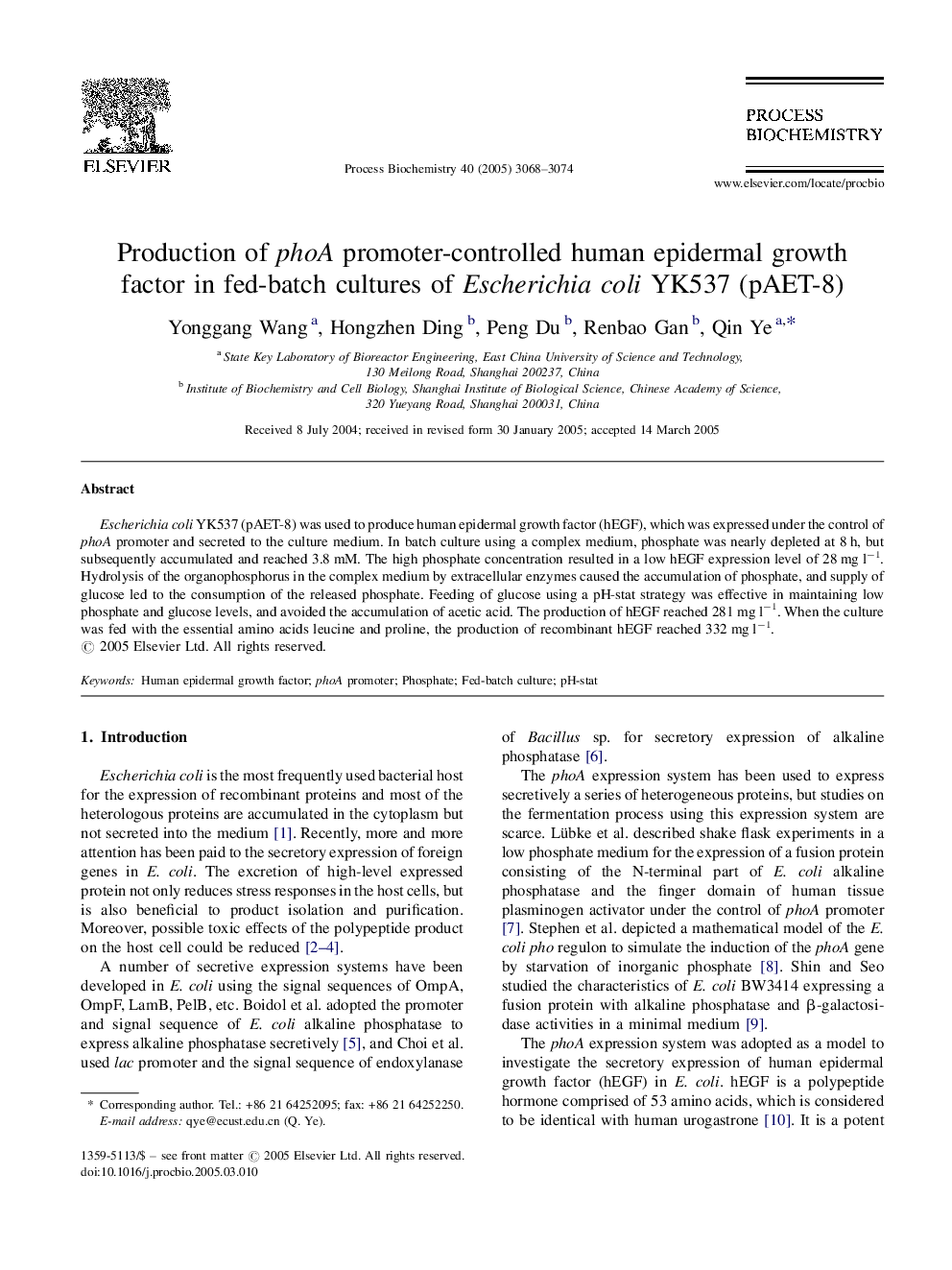| کد مقاله | کد نشریه | سال انتشار | مقاله انگلیسی | نسخه تمام متن |
|---|---|---|---|---|
| 36239 | 45125 | 2005 | 7 صفحه PDF | دانلود رایگان |

Escherichia coli YK537 (pAET-8) was used to produce human epidermal growth factor (hEGF), which was expressed under the control of phoA promoter and secreted to the culture medium. In batch culture using a complex medium, phosphate was nearly depleted at 8 h, but subsequently accumulated and reached 3.8 mM. The high phosphate concentration resulted in a low hEGF expression level of 28 mg l−1. Hydrolysis of the organophosphorus in the complex medium by extracellular enzymes caused the accumulation of phosphate, and supply of glucose led to the consumption of the released phosphate. Feeding of glucose using a pH-stat strategy was effective in maintaining low phosphate and glucose levels, and avoided the accumulation of acetic acid. The production of hEGF reached 281 mg l−1. When the culture was fed with the essential amino acids leucine and proline, the production of recombinant hEGF reached 332 mg l−1.
Journal: Process Biochemistry - Volume 40, Issue 9, September 2005, Pages 3068–3074